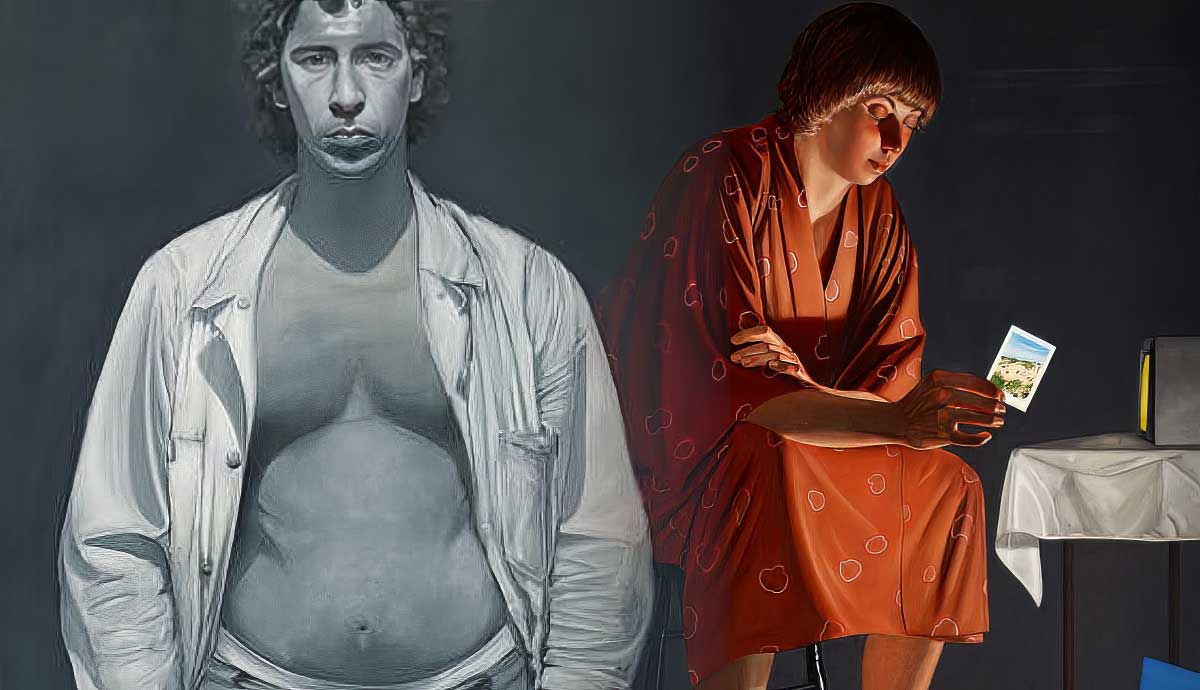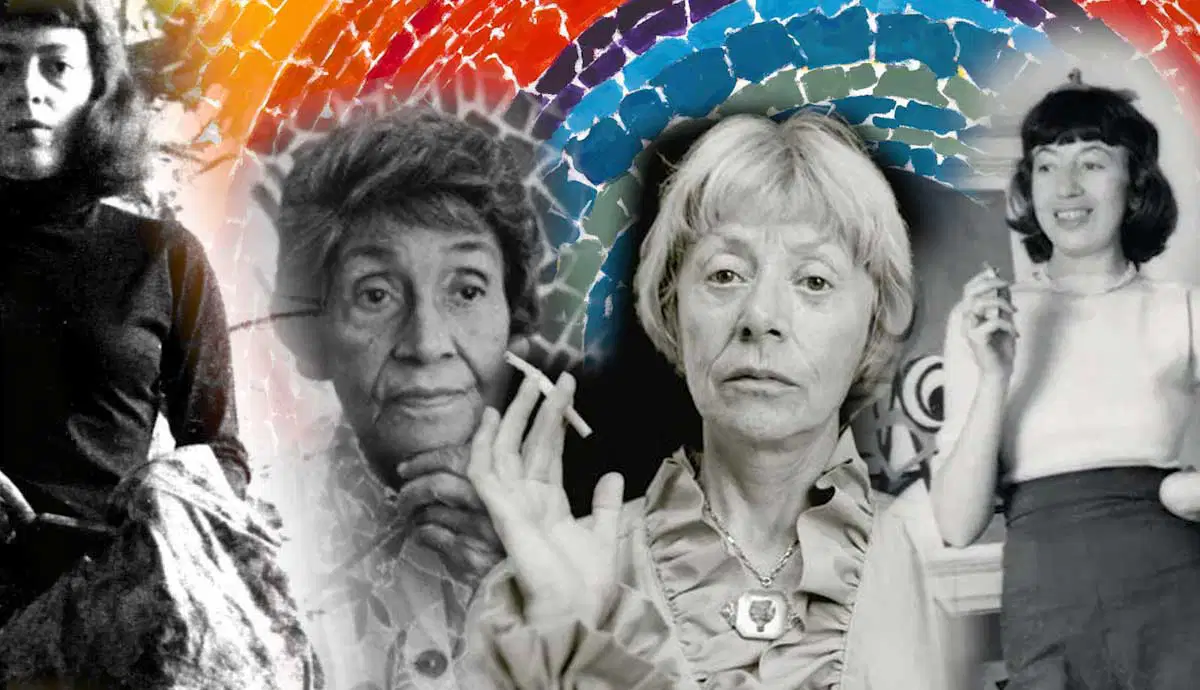
Alfred Leslie (1927-2023) was a painter born in New York City. He was known for his involvement in the Abstract Expressionist movement in the 1950s. He ended up changing directions over the course of his artistic career, and he was best known for large-scale figurative paintings like The Killing Cycle series. When viewing his work, one can see his New York upbringing reflected in the paintings, which deal with the complex and often gritty nature of urban life. His career and art remained illustrious until his death in 2023, incorporating bold figures and imagery in stunning portraits like Johnny Perry.
The Beginnings of Alfred Leslie

Alfred Leslie started out his artistic career as an abstract expressionist inspired by the likes of Jackson Pollock and Hans Hofmann. Born in New York City where the abstract expressionism movement was centered, Leslie studied art at New York University after completing service with the U.S. Coast Guard in World War II. In addition to creating iconic artworks during his lifetime, Leslie was also a filmmaker and directed a short film narrated by Jack Kerouac titled Pull My Daisy (1959).
Though Leslie made a name for himself as a second-generation Abstract Expressionist in the 1950s, he changed artistic direction in 1962 when he began creating large-scale figurative paintings. Initially, these figurative paintings were done in grisaille or greyscale, but Leslie began adding color to his paintings after most of his work was destroyed in a fire in 1966. Looking at the overall catalog of Alfred Leslie’s work, one can see great achievements in both abstraction and realism, as well as striking callbacks to twentieth-century Americana. Discover below the dynamic artworks that made Alfred Leslie a cornerstone of twentieth-century American artwork. Here are seven of his works you should know!
1. Abstract Expressionism: Orange and Black, 1948-50

In the 1950s and early 1960s, Alfred Leslie made a name for himself as an abstract expressionist and drew much attention with his exhibitions. Abstract Expressionism is an artistic movement that originated in New York City in the 1940s and 1950s, defined by irregular, spontaneous brush strokes and an emphasis on self-expression. Alfred Leslie’s Orange and Black (1948-50) is an impressive example of his work from that time, featuring bold colors and intriguing black brush strokes that may represent a figure. Though Leslie did not remain an abstract expressionist for long, his high-quality work within the movement still holds up today.
2. Pink Square (1957-60): A Simple Concept with a Large Impact

Alfred Leslie continued making abstract expressionist artworks in the late 50s and early 60s, including his painting Pink Square (1957-60). This artwork, comprised of a large pink square, smaller squares in green, grey, and yellow, and black lines, is still staunchly within the confines of abstract expressionism. However, it also signifies a shift in artistic style and priorities. Pink Square is much less spontaneous and chaotic in nature than his earlier works like Orange and Black (1948-50), and it was not long after creating this piece that Leslie turned his back on the movement in favor of exploring other styles.
3. Alfred Leslie (1966-67): A Deeper Look Inside

Not many of Alfred Leslie’s grisaille, or greyscale, paintings still exist because they were destroyed in a devastating apartment fire in 1966. This self-portrait is significant to Leslie’s catalog not only because it is composed of shades of grey, but also because it allows the viewer important introspection into the artist’s mind and sense of self. The details in this painting suggest a high level of skill with a monochromatic palette and Leslie’s intense expression and undone clothing make for a striking figure. Alfred Leslie (1966-67) is a significant self-portrait in that its style differs greatly from the other self-portraits he created in his lifetime, which were usually sketches or characterized by bolder colors.
Soon after creating this painting, Leslie quit painting in grisaille, saying, “There was a point at which I realized that if my work was to develop and evolve, and if I was to mature as an artist, these figurative ideas could not be ignored, even though following them could seem to imply that I would be turning my back on the twentieth century, turning my back on my abstract achievement.”
4. The Killing Cycle: Leslie’s Iconic Series of Figurative Paintings

After spending a few transitional years creating figurative paintings in greyscale, Alfred Leslie landed on an iconic style of painting that would become a hallmark of his catalog. The Killing Cycle is perhaps Alfred Leslie’s most famous work. It is a series of large-scale figurative paintings conceived and created between the mid-60s and mid-70s.
The series explores dark themes like war, violence, death, and destruction with stark realism and bold colors. The Accident (1969-70) is one of the most famous paintings in The Killing Cycle, depicting the scene of a car crash, in which his friend and famous poet Frank O’Hara died, in almost absurd detail. Leslie’s attention to detail when creating the figures and the blatant reality of the scene made an impact on viewers and cemented this collection as one of the artist’s most successful.

The Loading Pier (1975) is another significant painting from The Killing Cycle series, showing another fictionalized scene from the death of poet Frank O’Hara, one of Leslie’s longtime collaborators and friends. O’Hara was known for his close relationships with many artists. Though this series represents war, violence, and death as greater themes, the journey of creating this collection was also deeply personal for Leslie. The scene in The Loading Pier is almost cinematic, showing shocked women lowering O’Hara’s body in a panorama that recalls the work of baroque masters.
5. Americans, Youngstown Ohio (1977-78): A Striking Example of Leslie’s Americana

In the late 1970s, Alfred Leslie was deep in his quest to create large-scale figurative paintings and to represent American people and their circumstance. Americans, Youngstown, Ohio (1977-78) is a powerful painting by Alfred Leslie depicting workers and figures associated with Youngstown’s Butler Institute of American Art. The figures in this triptych of paintings are life-sized, creating an extraordinary in-person viewing experience with a great impact. Americans, Youngstown, Ohio is an example of the personal artistic style Leslie solidified for himself, known to many at the time as The New Realism.
6. Influence from Caravaggio: Instant Pictures (1981) by Alfred Leslie

Moving into the 1980s, Alfred Leslie’s paintings continued to be large in scale and incredibly realistic. Instant Pictures (1981) is often considered a monumental work in his catalog due to its clarity, realism, and the subject’s contemplative stance. This painting displays Leslie’s skill with the tableaux vivant style, which is French for living pictures, and incorporates the old with the new. Though the subject of this painting is looking through polaroid pictures, a modern technology, the style in which Leslie depicted her is almost Baroque in influence.
The lighting in the painting recalls the work of Caravaggio, a sixteenth-century Italian painter known for his depiction of gruesome scenes with ornate realism. By the time he painted Instant Pictures, Alfred Leslie was widely established in creating paintings with life-size figures and cinematic scenes. The way the woman at the center of this painting considers her polaroid photos is strikingly modern yet calls back to classic figures like Rodin’s The Thinker.
7. Alfred Leslie’s Later Years: Johnny Perry, 2013

Until his passing in 2023, the later years of Alfred Leslie’s career were marked by portraits of compelling figures and a deep dedication to artistic excellence. Starting with his opposition to the Vietnam War, Leslie became involved in political activism and social justice, and the subjects and themes of many of his paintings followed suit. Leslie was also fascinated with depicting the human form in a realistic way, perhaps because of so many years of abstract work and nonrepresentation in the 1950s and early 1960s.
Johnny Perry (2013) is a portrait painted by Leslie in the last decade of his life. It depicts Johnny Perry, a character from Chester Himes’ 1989 detective novel The Crazy Kill. In the portrait, Perry looks directly at the viewer, cigarette in his mouth, surrounded by objects like cookies, tea, playing cards, and a slice of birthday cake. The scene reappropriates imagery popularly associated with Lewis Carroll’s Alice’s Adventures in Wonderland and creates a new, much more intimidating, image.
FAQs
How did the fire in 1966 impact Alfred Leslie’s artistic direction?
The fire in 1966 was a pivotal event in Alfred Leslie’s career, leading him to shift from abstract expressionism to more figurative, narrative-driven works. This change marked a significant redirection in his artistic exploration, focusing on human figures and complex narratives.
Did the focus of “The Killing Cycle” evolve over time?
“The Killing Cycle” saw an evolution in focus as Leslie delved deeper into the themes of violence and tragedy. Initially inspired by a specific event, the work expanded to explore broader human experiences and emotions, reflecting Leslie’s interest in storytelling through art.
How is Alfred Leslie’s work viewed within the broader context of American art history?
Alfred Leslie’s work is regarded as an important bridge in American art history, connecting the abstract expressionism of the post-World War II era with the later movements towards realism and narrative art. His ability to transition between styles and themes showcases his versatility and reflects the dynamic shifts in American art during the 20th century.










